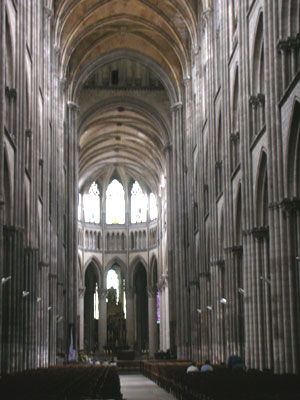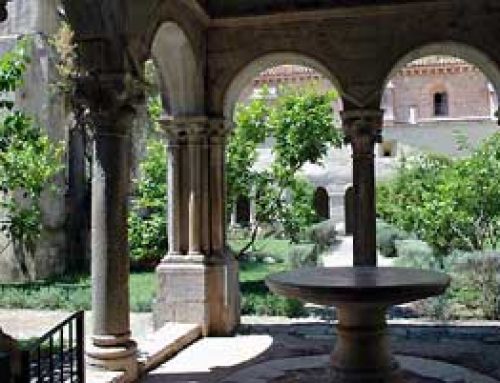
Rouen cathedral (begun 1202 AD)
The people of Rouen, in northern France, decided to build themselves a new cathedral in 1200 AD, just after people started building Chartres cathedral, and only about forty years after they began building Laon Cathedral and Notre Dame in Paris.

Rouen nave
Unlike these other cathedrals, though, it took more than three hundred years to finish Rouen cathedral, so that they didn’t finish the front, or facade, until 1530 AD (and they never did finish one of the towers). That’s why Rouen’s facade looks so much lacier and fancier than the other facades.
Inside the church, the people of Rouen (roo-AHN) followed the ideas of the architect of Chartres cathedral and so finished building the nave and the apse much more quickly, by 1220 AD. Rouen, however, was a little smaller than Chartres – only 98 feet high.
Like Chartres, Rouen has a four-part groin vaulted roof, and flying buttresses all along the outside to help hold up the roof. Again like Chartres, the walls are nearly all glass windows, and between the windows the thin columns have almost no capitals, but just draw your eyes upward. At Rouen, though, the gallery is big, as at Notre Dame, and the arches beneath are lower.




